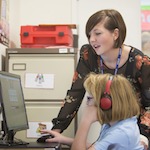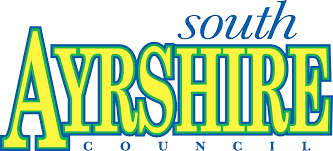When and why was Phonics introduced to primary school curriculums?
Teaching children to read well is the key to success for mastering English and writing but in other subjects too. Those who struggle with reading invariably struggle with the rest of their school work and fall increasingly behind as they progress through primary and secondary school.
It’s even more challenging when parents and guardians haven’t read to them at home before they start their primary education. This can happen for numerous reasons, such as the parents themselves don’t speak much English, or struggle with reading themselves. Teachers see that more often in socio-economically deprived areas.
Also, if parents don’t come from countries where English is the first or main language then they’re speaking English as Another Language (EAL). Children from EAL households may struggle even more to learn English successfully at a young age.
Children with Special Educational Needs and Disabilities (SEND) can also struggle with reading, especially if their disabilities are learning-related.

Ensuring children learn to read has always been a top priority for governments. It’s even more important in the early-years of primary education, as once children are equipped to read by themselves they’re better equipped for every aspect of schooling.
In a 2012 Ofsted report, Moving English Forward, it noted that while attainment in English had risen in secondary schools since 2008, it had stalled in primary schools where far too many children had failed to reach the expected levels in reading and writing. One in five primary pupils failed to achieve the expected level of English in their SATs at the end of key stage 2.
One of the most effective actions the previous Labour government took was to act on the recommendation of Sir Jim Rose, chair of a major review of the national primary curriculum. Since then, children have be taught to read using ‘high-quality, systematic and synthetic’ phonics as the preferred method. It was introduced by Labour in 1998 and then became the mandatory legal method to teach children to read in 2006.
This ‘phonics first’ principle has been embraced by the last coalition government which further strengthened the emphasis on phonics by introducing a phonics test at the end of Year 1 to check children’s reading progress in England. Ministers backed this up by promising to fund additional support for children who were struggling to read.
Here are the dates that primary teachers need to know for Phonics and other tests during this current academic year.
Here is how you can apply for extra funding for targeted interventions at primary school using the Pupil Premium Budget.
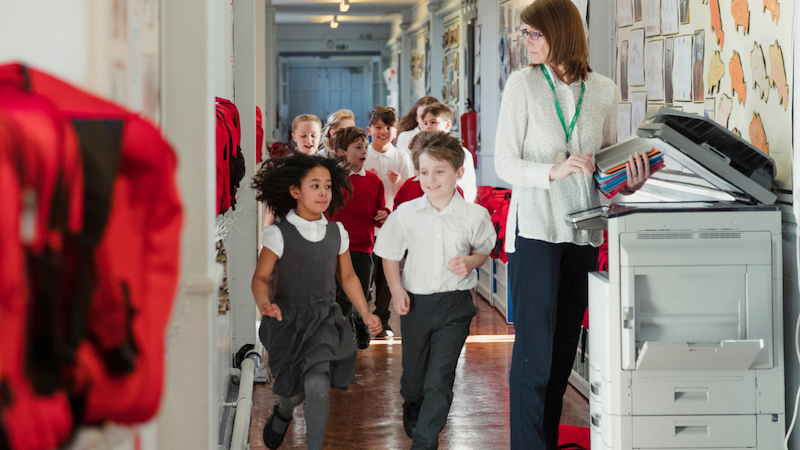
What do teachers think about current Phonic teaching methods?
In 2014, ReadingWise conducted a survey of 500+ teachers and TAs across the UK.
Our survey found that:
- More literacy teachers stress the importance of reading for pleasure (98%) and giving children the experience of a wide range of texts (92%) than on synthetic phonics (79%)
- Only one in five teachers (20%) fully supports the phonics test introduced in 2012 to check the reading levels of six-year-olds
- Less than one in four teachers (21%) fully supports the emphasis on synthetic phonics as the principle strategy for teaching children to read
- More than half of teachers (52%) think the current emphasis on synthetic phonics is either ineffective or not very effective as a strategy for helping children with dyslexia.
- Nearly half (45%) also think it is ineffective or not very effective at helping the most able readers while more than a third (37%) question its effectiveness for readers with learning disabilities
However, the survey did show that despite serious doubts about the policy, most teachers (58%) say their schools have increased the emphasis on synthetic phonics as a result of government guidance and many report a measurable improvement in children’s reading ability as a result.
So, back in 2014 teachers didn’t love the introduction of phonics yet found it a useful addition to teaching methods and children were starting to benefit from it.
Now, let’s jump forward 10 years and see what teachers are saying about phonics in 2024.
According to a landmark study by UCL’s Institute of Education, many teachers feel a “narrow focus on phonics” is “uninformed and failing children.” The study found that many teachers feel that the teaching of synthetic phonics is “not underpinned by the latest evidence”.
Proffessor Dominic Wyse, co-author of the UCL study, said: “Although there are some strengths to England’s current approach to teaching reading, our new research shows that the government’s policy is uninformed because it is not underpinned by the latest robust evidence.”
Over 2,200 teachers were surveyed for this study. It’s backed up by England’s Pisa reading scores, that are “are virtually unchanged since 2006”, despite the introduction of Phonics in 2012 and the mandatory phonics screening check.
Wyse went onto say that: “Our view is that the system doesn’t give teachers enough flexibility to do what they think is best for their pupils, nor to encourage pupils to enjoy reading.”
It seems that core worry, that children need to be encouraged to enjoy reading hasn’t gone away. Our 2014 survey found that: “Eight out of ten teachers think it is important to use synthetic phonics to teach reading but nearly all teachers believe encouraging children to read for pleasure is even more important.”
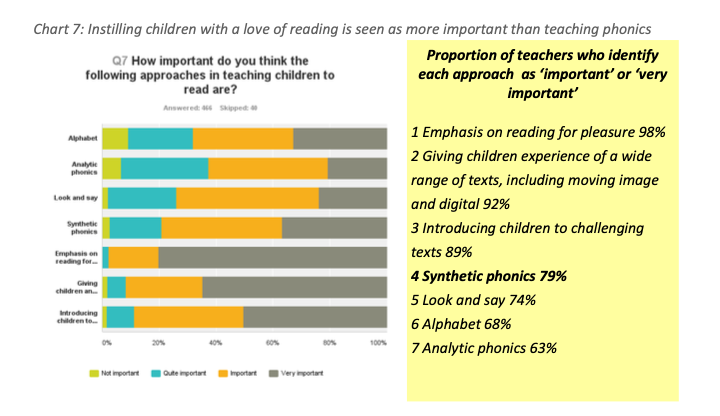
How does the government recommend schools solve these challenges?
In 2023, Lee Owston, National Director Education, published an article with guidelines and recommendations for schools and teachers that have children struggling with reading and phonics.
Ofsted put together 5 guiding principles:
- If pupils are not able to read well, they will not be able to access the full curriculum. Being able to read accurately by age 6 has a strong correlation with future academic success. So, getting phonics teaching right is essential.
- Rigorous ‘keep-up’ reduces ‘catch-up’ later. The DfE says that: Teachers should aim for all children to keep up with the school’s chosen phonics programme, ensuring teaching time is sufficient for the content to be taught within the timescales the programme sets out. Some children need extra support from the beginning.
- Catch-up is essential for pupils who have fallen behind. Making the best use of time in every phonics lesson, as well as finding sufficient time for extra teaching and practice, is crucial, even if that means missing other lessons.
- There are no short cuts when following the sequence of a phonics programme. idelity to the sequence of the school’s phonics programme is essential. Each programme introduces grapheme-phoneme correspondences and common exception words in a specific order.
- The curriculum is the same for all pupils, including those who need to catch up
Ofsted and the DfE are encouraging schools to implement targeted support for children struggling with phonics straight away: “providing targeted help for identified pupils from an extra adult during the phonics lesson.”
Here is how you can apply for extra funding for targeted interventions at primary school using the Pupil Premium Budget.
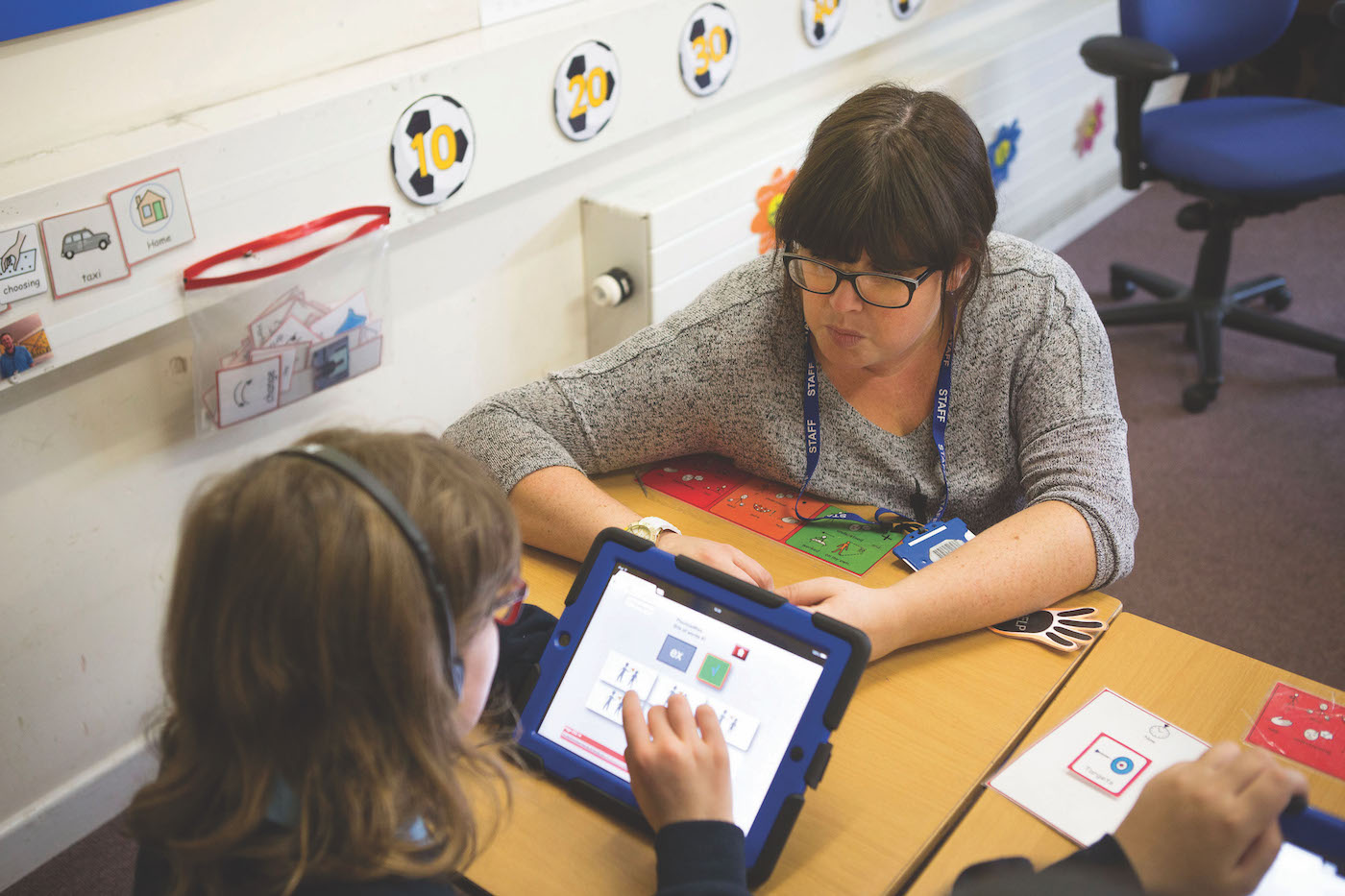
How can you help primary school children struggling to read and understand phonics?
If you’re looking for an evidence-based literary intervention solution for Phonics then we’d recommend our ReadingWise Zip.
Zip is a simple, effective supplementary online phonics programme. It is sequenced to match your phonics programme, reinforcing your staff's great work and plugging missing gaps.
You can also supplement Zip with our Learner’s Library , really helping instill a love for reading in children from an early age.
What is ReadingWise Zip?
Zip is ideal for pupils who have not progressed as expected with their phonics. This include primary and secondary age pupils. Zip is also a useful supplementary phonics resource for EAL and SEND pupils.
As an adaptive literacy intervention learning programme using a smart algorithm, Zip understands when a child has mastered a letter-sound correspondence.
Different phonics programmes deliver letters and blends in different orders. Zip is designed to run alongside whichever phonics scheme your school uses, and is perfectly sequenced to match and support your programme.
“100 children completed the KS1 Zip pupils’ survey. 97% stated that ReadingWise Zip is helping with their reading. 98% said they liked doing Zip.” Read more of our case studies and testimonials
How is Zip implemented?
Zip has a growing number of programmes that can be allocated on a per-learner basis. A, B, and C are based on the letters and sounds phonics phases and sets.
For example, Programme A starts at Phase 2; B starts at Phase 3, and C at Phase 4. This allows a level of differentiation for primary teachers and TAs who need to support pupils with a diverse range of reading ages and abilities.
Programme D is based on a Scottish set of common words, tailored around Active Literacy up to P3 (P3 is year 2 in England). You can read more about this programme here.
Over 300,000 pupils across the UK have benefited from ReadingWise programmes.
On average, ReadingWise produces a 10 month increase in a children’s reading ability after only 1 term.
“Seeing the difference ReadingWise makes from when the pupils first start out to where they are now is great. The best part is seeing their reading age improve from below their actual age up to and often exceeding their actual age.”
Amanda Scott, PSA, Alford Primary School, Aberdeenshire
Boost your school's literacy results: Arrange your 20-minute demo at a time to suit you.
We highly recommend you spend 20-minutes running through the programme with our friendly and knowledgeable team by booking a demo to suit your diary.
The two charts below show an overview of the results of a DfE-funded study into the impact of Zip:

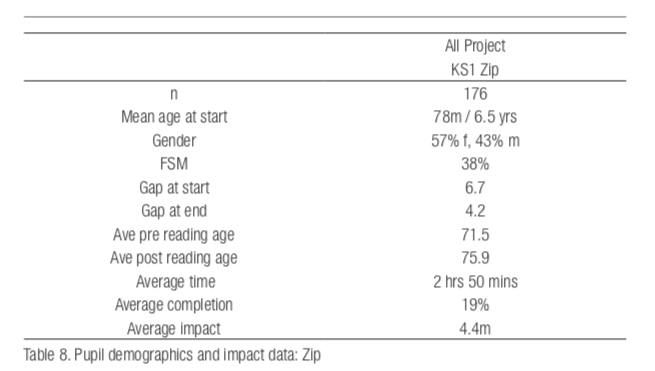
Find out more about our:
ReadingWise Modules, including Zip.
Boost your school's literacy results: Arrange your 20-minute demo at a time to suit you.
We highly recommend you spend 20-minutes running through the programme with our friendly and knowledgeable team by booking a demo to suit your diary

